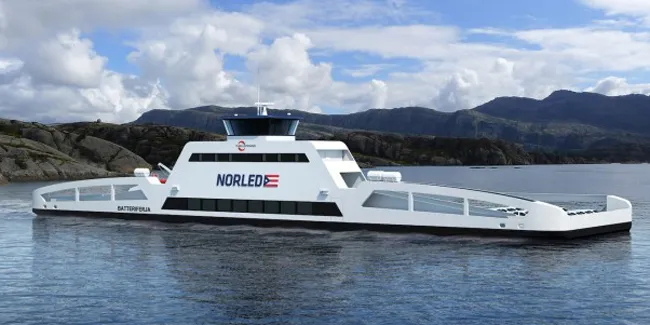Regional grid operator Electricity North West next month begins £1 million worth of upgrade work. One task will speed the arrival of Lake Windermere’s first electric ferry for cars.
Network super-sparkies working in Windermere and Bowness from 3 October alongside Cumbria’s transport engineers will free up new supply, including for public EV charging points in several of the towns’ car parks.
The county also intends replacing a 30 year old diesel-driven workhorse ferry, the ‘Mallard’, with a new, faster electric alternative, permitting more crossings between the towns via a 400 metre riverine stretch of the B5285.
Due to its age, the old bird is suffering increased breakdowns, resulting in unreliable service in peak holiday seasons, when income from tourists should be at its highest.
Measures announced in July should now see shipyards across the UK and wider invited to submit their ideas for an electric design, before a formal tendering process takes place.
Officials intend placing this autumn an order for delivery of the new volt-heavy vessel, enabling a new cable-drawn service to begin in the spring of 2024.
Electric passenger boats already feature on environmentally sensitive waterways throughout Europe. Berlin even has a commercial company which hires out solar powered vessels on the Weber and Spree.
In London, plans were mooted in July 2019 for an electric ferry linking Rotherhithe to Canary Wharf.
Of the network reinforcement starting in Lake Road, Bowness, ENW’s supervising engineer John Wilkinson said: ”This project has been in planning for several months, so we‘re glad we can now confirm a start date”.
Keith Little, the county’s councillor overseeing roads, added: “Our plans for the brand-new electric Windermere ferry relies on this infrastructure being in place. The enhanced provision of electric vehicle charging points in this high tourist area will also be of great benefit to visitors and locals alike”.
Norway introduced the world’s first electric car ferry in 2015. The 80-metre, double-screw ‘ZeroCat’, pictured, can carry up to 120 vehicles and 360 passengers making the 6 kilometre fjord crossing between Oppedal and Lavik. Designed and built by Siemens, the catamaran’s 800kWh battery weighs 9 tonnes, and reportedly takes only ten minutes to re-charge.





To keep the new electric ferries working continuously during peak traffic periods, the committee should consider a hydrogen-electric power train, as refilling with hydrogen takes the same time as refilling with the old diesel ferry and can extend sailing times without the weight penalty of a larger battery